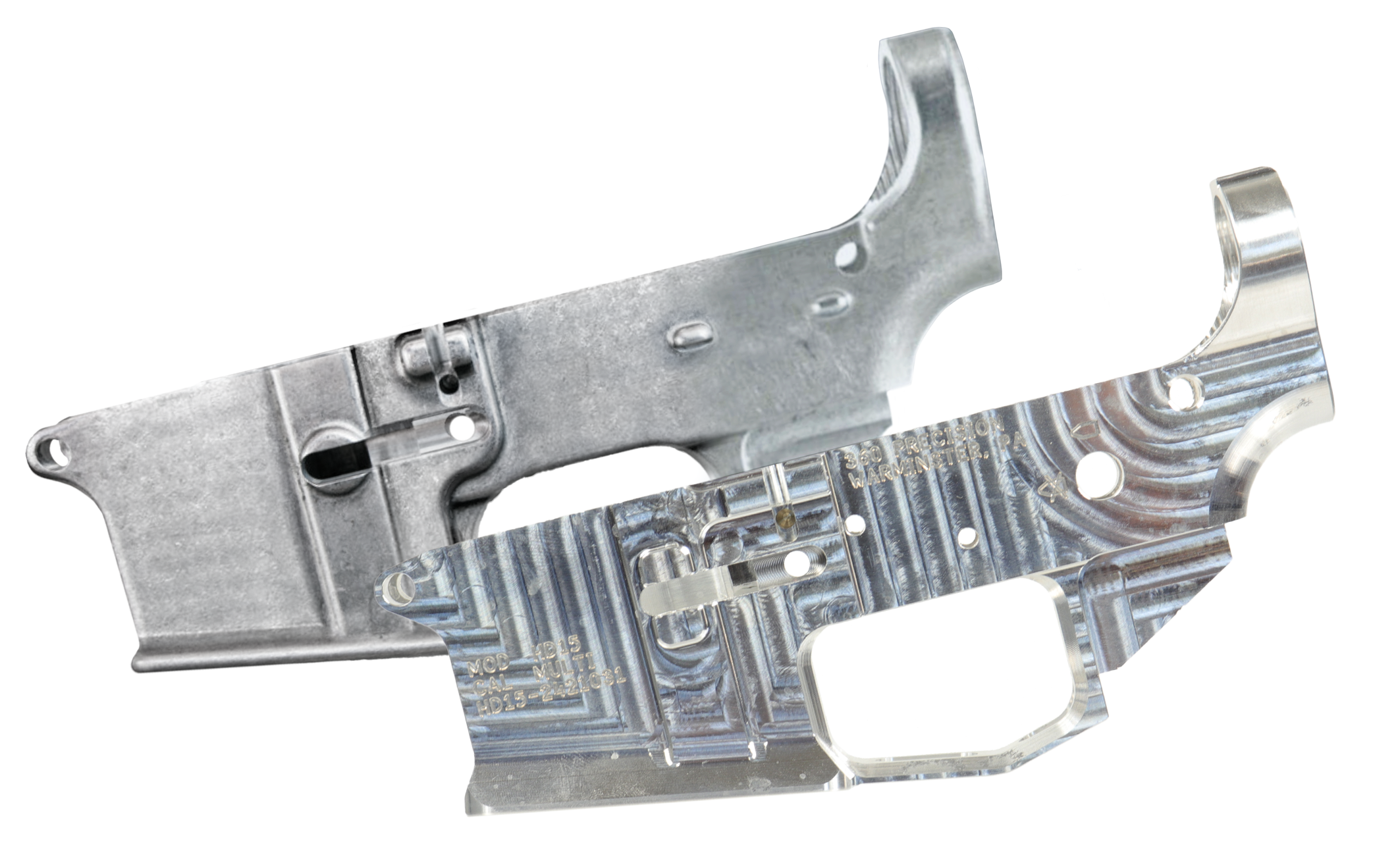Machined vs Forged
- 360 Precision
- Insights
- Insights
- Machined vs Forged

Machined
Machined receivers are milled out of a solid block of aluminum called billet stock.
The two most common aluminum alloys used for machining AR receivers are 6061-T6 and 7075-T6. The main difference between the two is the amount of zinc alloyed with the aluminum. Among the aluminum alloys suitable for firearms manufacture, 7075 aluminum offers the greatest strength, corrosion resistance, and resistance to heat. T6 refers to the type of temper (the heating and cooling process) used to increase the strength over that of untempered metal.
Advantages of billet-machined receivers include the extremely tight tolerances (often measured to within a tenth of a thousand of an inch = .0001) made possible by the machining process. Tight tolerances throughout a build translate into increased accuracy. In addition, since these receivers are cut by a CNC machine following a program, they can be customized to create shapes and features not possible through the forging process.
Forged
Forged receivers are blocks of aluminum that are heated and then pressed into shape under several tons of pressure. The forging process forces the aluminum grains closer together and aligns the directionally thereby increasing the strength or the resulting part. Since forged receivers are stamped from a single mold, they can be mass-produced and are therefore less expensive and more common than machined receivers. A disadvantage of the forging process is the inability to create some of the sharp edges, fine details and tight tolerances made possible by the machining process.
What about weight and strength?
Weight differences between the two tend to be negligible and are most affected by any customization of the receiver away from mil-spec. And unless the receiver is used for other than its intended purpose (hammer, battle axe, etc.), the strength differences between the two types will be negligible.
In conclusion, whether you choose a machined or a forged receiver, either will give you decades of problem-free service.
